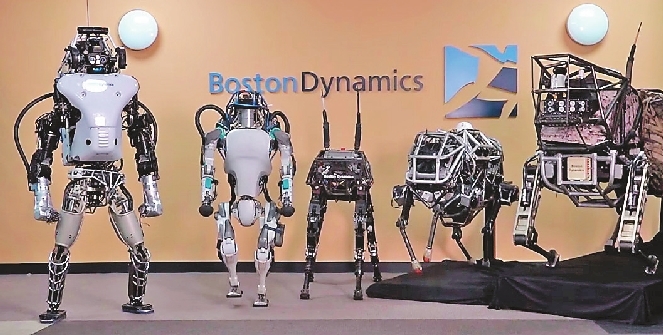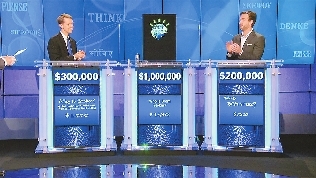





ARTIFICIAL intelligence (AI) is defined as “a branch of computer science dealing with the simulation of intelligent behavior in computers; the capability of a machine to imitate intelligent human behavior,” according to Webster’s Dictionary. Recent advancements in the field, however, have proven that AI is so much more than a mere scientific curiosity. The technological advances attributed to AI have the potential to completely alter the world as we know it. Artificial intelligence used to be the stuff of science fiction; evidence of the concept being studied by real-life scientists dates back to the 1950s. British mathematician Alan Turing explored the theory in a research paper in the year 1950, but the fundamentals of computers weren’t yet advanced enough to bring the idea of artificial intelligence to fruition. As computers began to get faster, more powerful, and less expensive, AI began to pick up steam through the ’70s. Successful projects began emerging in scientific communities. Then, for close to a decade, AI research hit a wall as funding lapsed and scientific theories began to outpace computer ability once again. The biggest exception was a Japanese government-funded US$400 million project aimed at improving artificial intelligence from 1982 to 1990. The 1990s and 2000s saw some huge advancements in artificial intelligence as the fundamental limits of computer storage yielded to new hardware innovations. As the applications of AI become more and more prevalent in the daily lives of humans, it is essential to have the context of some of the most important advances in AI history. Here are some of the most significant advances in artificial intelligence from all different uses, applications and innovations. Whether it’s robots, supercomputers, health care or search optimization, AI is coming up strong. Boston Dynamics Known for their AI robots and resulting viral videos, Boston Dynamics truly changed the public’s understanding of what robots with AI technology are capable of. Videos of their first big robot “Big Dog” went viral in 2005, and since then millions of people have enjoyed watching the company grow from smaller four-legged robots to full-fledged humanoids with the ability to perform parkour and backflips. AI artwork October 2018 marked the first piece of AI-generated artwork sold at an auction, signaling the emergence of AI into the art world. The portrait was created by a Paris-based collective that is studying the interface between art and AI and sold at Christie’s auction house for US$432,500. ProFound AI First launched in the U.S. in December 2018, ProFound AI is a cancer-detection software that assists radiologists in finding early digital breast tomosynthesis (DBT) in patients. While the technology has only reached select high-profile hospitals so far, the innovation is a great precursor to what’s to come in the medical world of AI. AlphaGo DeepMind Technologies’ AlphaGo first made headlines when it defeated the European champion in the complex Chinese board game Go in 2015, before going on to beat the world champion in 2016. AlphaGo famously marked a new age in advanced AI programs combining traditional methods with deep neural networks. AI-generated human faces The Japanese startup DataGrid began creating AI-generated faces in 2018, but didn’t go viral until April 2019. It was then that a press release revealed a series of photorealistic images of what appeared to be humans but were, in fact, created by AI. This advance utilizes a whole new level of deep learning algorithms that create realistic images so good that they can fool other humans. TensorFlow TensorFlow, the deep-learning library that Google uses in its products (search engines, translation, recommendations, etc.), was first released to the public in 2015. TensorFlow is open source — meaning that anyone can download it and use it for free — and symbolizes the importance of making machine learning and AI available to anyone for any purpose. AI glass In July 2019, scientists from the University of Wisconsin-Madison created artificially intelligent glass with the ability to recognize images without a power source. One of the utilizations of this AI “smart glass” is creating face ID-locking security software on your phone without using the battery. Potentially, the glass could create a biometric lock that could stand the test of time without the need for an Internet or battery source. Autonomous driving In 2015 the first cross-country road trip performed by an autonomous car was completed in nine days. The Audi SQ5 was equipped with autonomous driving technology and software from Delphi Technologies to allow the car to make human-like decisions from merging onto highways to parking and everything in between. Though the safety driver (seated in the front seat per the law) reportedly had to interfere a few times, the trip marked a huge advancement in the future of driverless car technology. IBM’s Watson When IBM’s Watson computer running software defeated two “Jeopardy!” all-stars in February, 2011, it breached a gap between technology and popular culture in a big way. Watson could hold about 1 million books’ worth of information in its software and storage, and when posed with a question, the AI ran several different algorithms to rank the best answer. This was different from traditional computer searching keyword-based software, as “Jeopardy!” questions are inherently human in nature, mixing colorful wordplay with puns and cultural references. Deep Density Displacement Model The year 2019 saw a huge advancement for artificial intelligence in astrophysics with the development of the Deep Density Displacement Model. In June, astrophysicists were able to use AI to generate 3-D simulations of the universe for the first time, shaving down the time it previously took to create complex simulations from minutes to milliseconds. “Ghost population” discovery In February of 2019, a report released by Nature Communications revealed that machine learning technology had found evidence in the human genome of unknown human ancestors, or a “ghost population.” Somewhere down the line of human evolutionary history, a previously undiscovered group of hominins bred with homo sapiens leaving behind traces of DNA. Facebook chatbots In 2016, Facebook announced that the company would be placing chatbots on their messenger platform, giving businesses the opportunity to provide automatic customer support, interactive content and more. The ability to replace real people with AI capable of performing tasks like making reservations, reviewing orders and responding to human users with structured messages was a game-changer for businesses at the time. AI in mobile phones Chinese technology company Huawei claimed one of the first smartphones with artificial intelligence capabilities in September 2017, becoming the first company to base its key appeal for a cell phone around AI. The Huawei Mate 10’s Kirin 970 chipset was specially designed for the fast processing required for taking photos on your phone, all while utilizing more bandwidth. Though Huawei has since come out with new models of phones with the tech, the original Mate 10 marked a leap towards the future of mobile AI. OpenAI language model OpenAI, the artificial intelligence research company founded by Elon Musk, unveiled an AI system that can generate text in February 2019. The language model became available to the public in a limited form shortly thereafter and proved what was previously believed to be untrue — that AI had the capability to be creative. Deep Blue In 1997 IBM’s Deep Blue computer became the first machine in history to beat a world champion at chess, famously proving to the world that AI could actually be developed to surpass humans in certain intellectual tasks. Deep Blue paved the way for IBM’s future AI superstar computer, Watson, and changed the world of technology forever.(SD-Agencies) | 
